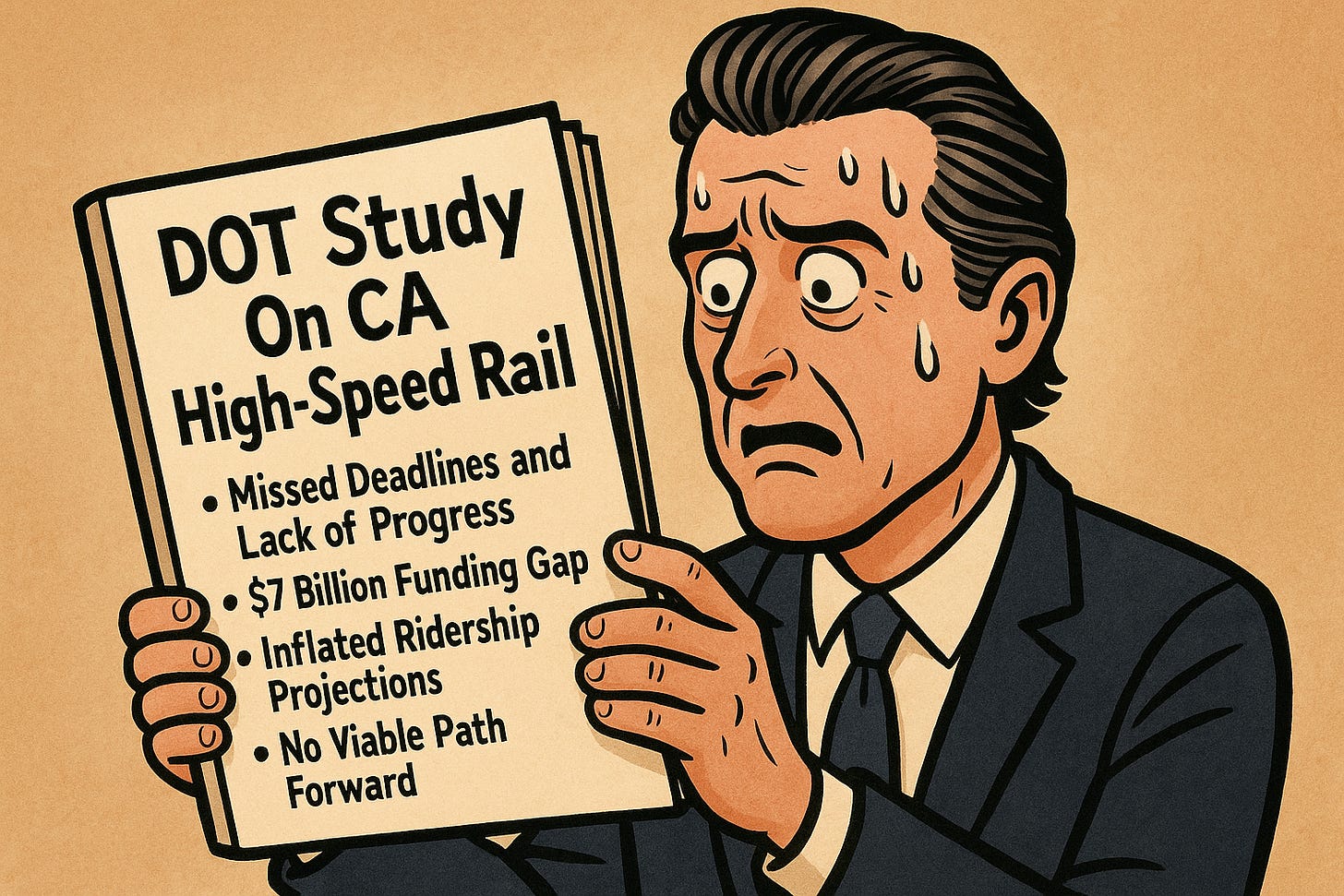USDOT Drops the Hammer on California’s High-Speed Rail
The state has been given 37 days to respond or risk losing the remaining billions in federal funding.
USDOT puts California on Notice Of Potential Cancellation of Funding
The United States Department of Transportation has delivered California's high-speed rail project a devastating blow. On Tuesday, the Federal Railroad Administration released a scathing 310-page compliance review, exposing the California High-Speed Rail Authority's (CHSRA) chronic mismanagement and failure to meet performance standards. Transportation Secretary Sean Duffy did not mince words: "This report shows a cold, hard fact: CHSRA does not have an achievable way to complete this project on time or budget." He warned that if CHSRA cannot get the job done, $4 billion in federal funding might be reallocated to projects better reflecting President Trump's vision of "building great, big, beautiful things again."
A Litany of Failures and Broken Promises
The federal report details appalling deficits, including a $7 billion funding gap, missed deadlines for critical procurements, and inadequate budgetary provisions for contractor delays. Following $6.9 billion of federal investment over 15 years, not a single mile of high-speed track has been built. The CHSRA's promise of an Early Operating Segment by 2033 is now a pipe dream, with the DOT citing ambiguous non-federal funding and overstated ridership projections. What has long been touted as progress is now exposed as a taxpayer-backed illusion.
Political Fallout and Presidential Rebuke
President Trump has not been subtle in his condemnation. Last month, he told reporters, "This government is not going to pay," referring to the project's runaway cost overruns—a stance he has held since he called it a "disaster" in 2019. The project's troubled history stretches back to Governor Jerry Brown, who championed high-speed rail as his legacy. Voters endorsed a $10 billion bond in 2008 for a San Francisco-to-Los Angeles line, with a promise to complete it by 2020 for $33 billion—promises that quickly unraveled.
Soaring Costs, Shrinking Ambitions
Expenses have ballooned to $106 billion since its inception, with estimates now at $128 billion, as the project has been scaled back to a meager Merced-to-Bakersfield segment. After $15.7 billion was spent, there is little to show for it besides 171 miles of construction and some structures in the Central Valley. Governor Gavin Newsom inherited the project and forged ahead despite runaway costs and delays, touting job creation and economic gain, while the rail itself remains a non-starter.
A Plea for Accountability and an End to Fiscal Irresponsibility
This is governmental incompetence on a historic scale: billions squandered, deadlines ignored, and taxpayers lied to. The DOT report is a call to accountability. It's now clear that, for all of Newsom's efforts, the federal government is finished investing in this failed project. Newsom needs to be accountable and pull the plug—perhaps one way to begin closing the state's budget gap and put an end to a legacy of fiscal imprudence. The Governor would do well to listen to the advice of State Senator Tony Strickland (R-Huntington Beach), Vice Chairman of the Senate Transportation Committee, who said, “Let’s stop wasting California’s hard-earned taxpayer dollars and put that money toward a better use for all Californians, such as lowering the gas tax, funding Proposition 36, or investing in shovel-ready projects to start."



